Entering and exiting wetsuits used to be a great distress of my diving experience, whether it was freediving or scuba diving. The dread of wrestling with an inflexible suit, one that felt like it was peeling off a layer of my skin and left me resembling a mummy after the arduous struggle, almost made me contemplate giving up on diving altogether.
However, everything took a turn for the better when I switched to my tailor-made open-cell freediving wetsuit. This game-changer boasts a delicate design with open cell on the inside and smooth skin on the outside. Crafted from top-notch neoprene, it perfectly balances warmth, flexibility, and durability. Plus, the ease of slipping in and out (thanks to a little soapy water assistance) has transformed the dreaded ritual into a breeze. Not only is it super comfortable, but it also keeps me snug and flaunts a sleek appearance with its shiny smooth skin. Needless to say, I'm absolutely pleased with it!
Just last week, my heart sank as I stumbled upon a gut-wrenching discovery – mold had taken residence on the back and around the hood of my wetsuit, particularly on the open cell neoprene side. I typically hang it inside out to dry, with the smooth skin side usually drying rapidly. However, the open cell side and lined areas, like the waist, tended to take a bit longer. Unfortunately, the mold found its opportunity to thrive and spread its unwelcome presence. The culprit? The suit being hung on a busy rack in the back of a dive shop with little ventilation and high humidity.

In my quest for answers, I turned to the vast realm of the internet, diligently searching for insights on tackling a mold-infested wetsuit. My queries ranged from "How to clean a moldy wetsuit" to "How to eliminate mold from neoprene" and "Effective methods for treating mold on open cell neoprene." To my surprise, this seemed to be a relatively controversial territory, with numerous individuals sharing and debating different opinions across various forums.
Amidst the chatter, a few consistent takeaways emerged – lessons that a majority seemed to agree upon:
1. Avoid Bleach: The unanimous advice echoed a warning against the use of bleach, emphasizing its potential to harm the neoprene material.
2. Consider Vinegar and Soapy Water: As potential remedies, vinegar and soapy water surfaced as popular suggestions. While they were believed to be gentle on the neoprene, capable of tackling mold, it was noted that they might not completely eliminate stubborn stains.
Now, let me walk you through my cleanup experiment:
1. Blend 1 part vinegar with 3 parts water.
2. Take a cloth, immerse it in the concoction, and delicately cleanse the moldy regions.
3. Allow the afflicted area to soak in the vinegar-water blend for a few hours.
4. Revisit step 2, once again employing a gentle rub-down on the area.
5. Give the entire suit a thorough wash with soapy water and ensure a meticulous rinse with fresh water.
May these steps guide you towards a mold-free wetsuit revival!
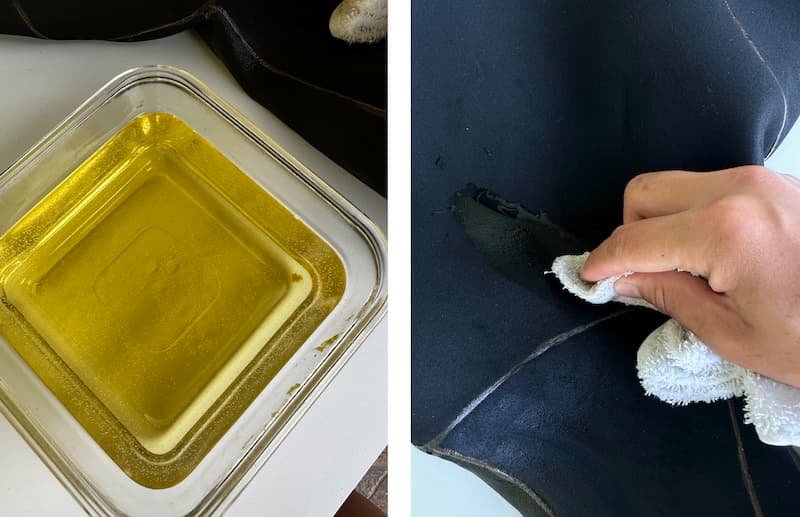
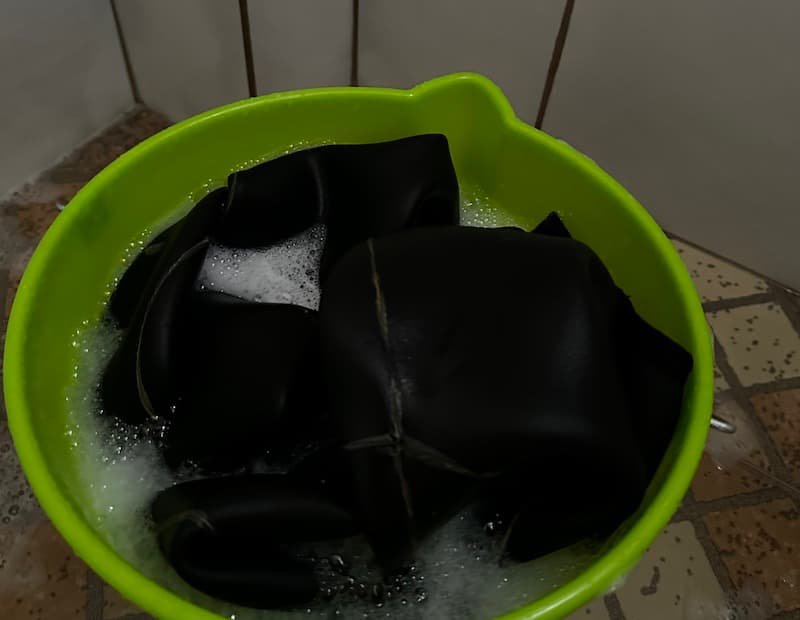
Following the drying process, I was pleasantly surprised to discover that this method not only bid farewell to the mold but also successfully eradicated the stains – contrary to certain online skepticism (who would've thought the internet could be mistaken?).
While the neoprene now bears a slight impression of damage where the mold once resided, regrettably, this alteration is irreversible. Yet, I remain optimistic that this visual change hasn't compromised the structural integrity of the neoprene, and there's no imminent threat of further deterioration.
Here's to hoping that the mold doesn't stage a comeback, and long live the glory of my revitalized suit!
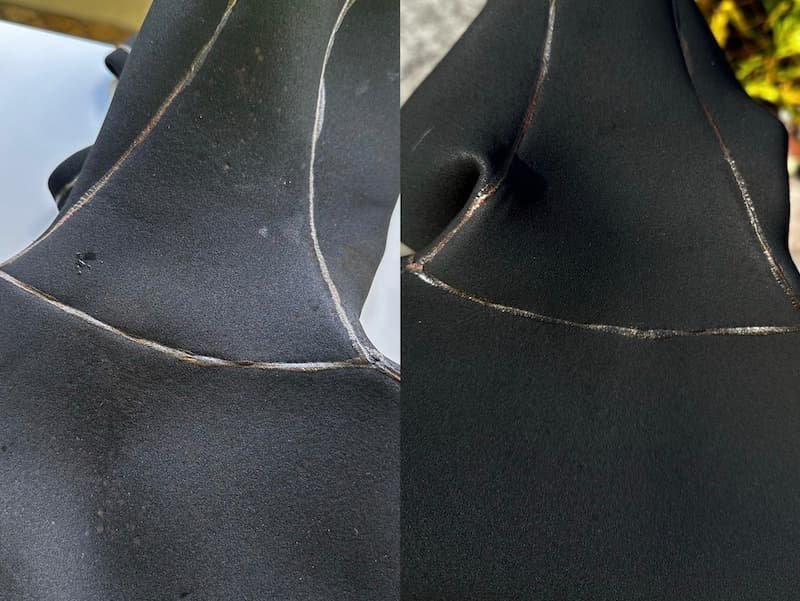
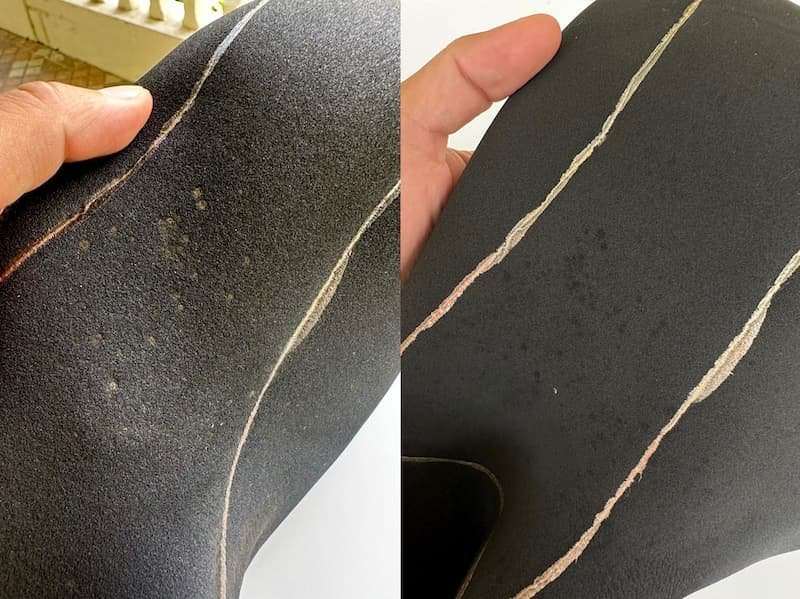
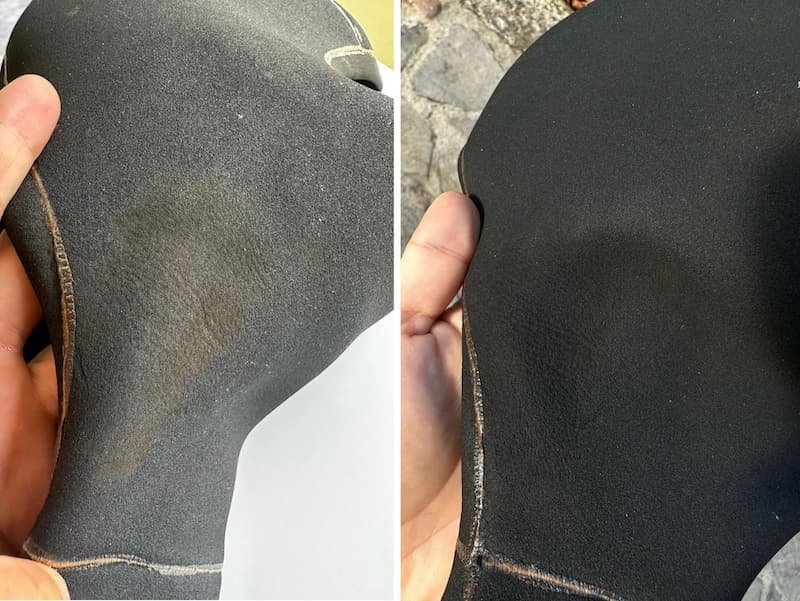
I've incorporated some low-effort suit maintenance habits into my weekly diving routine, aiming to extend the longevity of my beloved wetsuit:
1. Shielding from the Sun: Whenever I'm not doing a deep dive where a slight performance improvement matter, I make it a practice to wear a rash guard over my wetsuit. This helps protect it from the sun's harsh rays.
2. Air Dry with Nature's Touch: After each dive, the wet wetsuit gets an al fresco rendezvous – hanging outside for a breath of fresh air before finding its spot in the shop.
3. Occasional Soapy Love: Periodically, I treat my wetsuit to a gentle rinse with soapy water or a diluted Dettol solution. This not only keeps it fresh but also serves as a preemptive strike against potential mold and bacteria buildup.
I hope this helps your suit maintenance too! Happy diving!